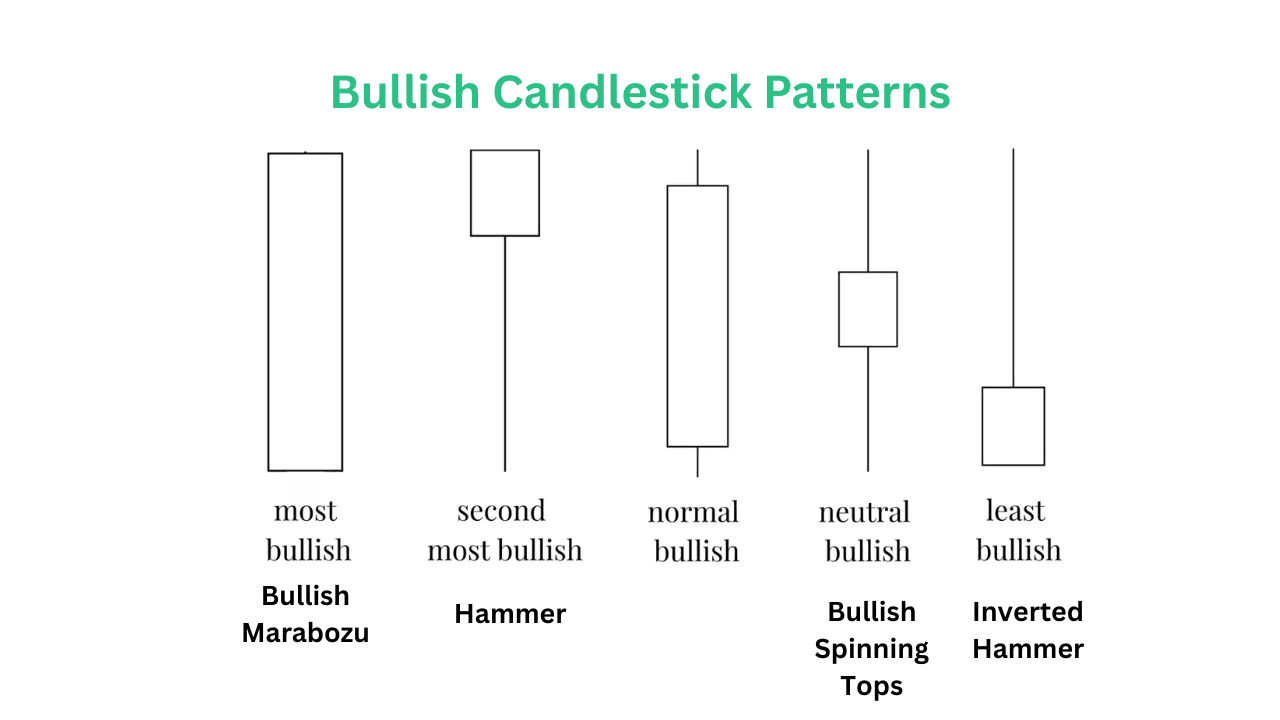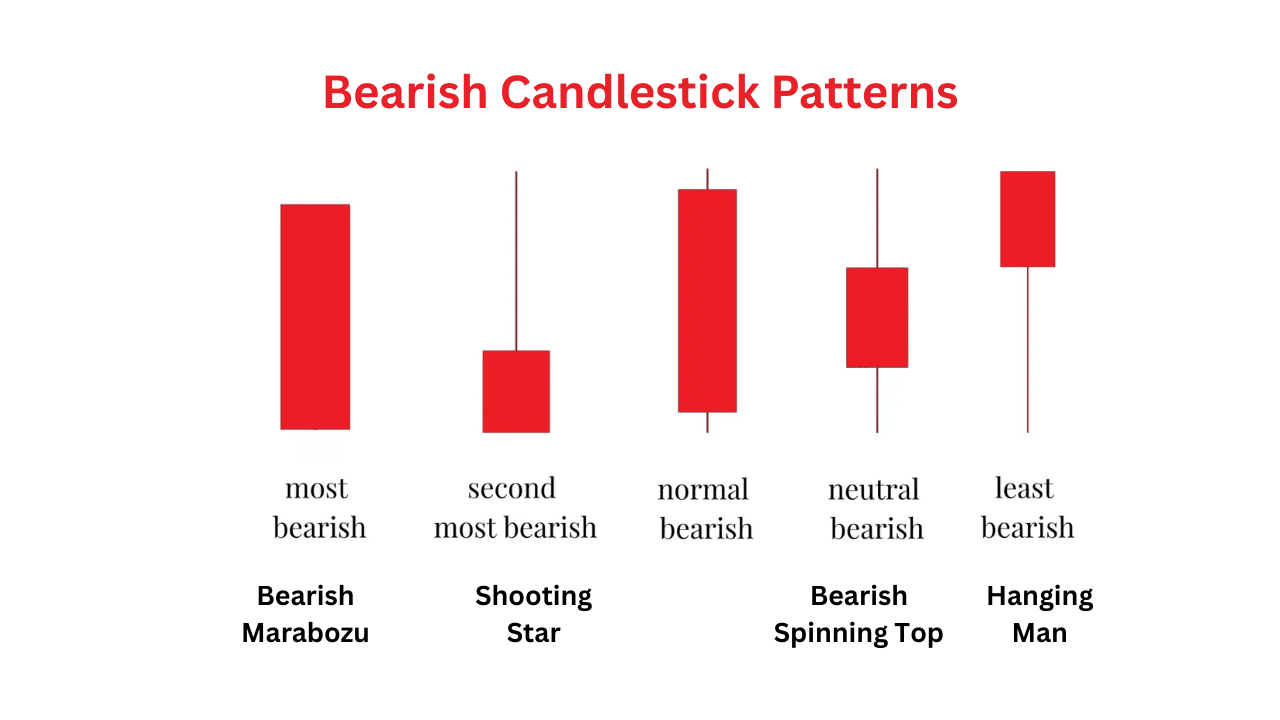Nextdoor stock soars after Eric Jackson touts AI potential
If you want to get better at reading charts, you have to understand candlestick patterns.
They’re the real-time story of who’s winning the battle — buyers or sellers — and they can give you some of the clearest clues about where price might be headed next.
Today, let’s break down the most important bullish and bearish candlestick patterns — the ones that really matter — and explain what they tell you in plain, simple language.
The Most Bullish Candlestick Patterns
When the market is bullish, buyers are stepping in with strength. Here are the top patterns that show you when that’s happening:
1. Bullish Marubozu (Most Bullish)
This is a candle with a big, fat body and no wicks (or very tiny ones). It opens at the low and closes at the high — total buyer domination.
What it tells you:
- Buyers were in control from start to finish.
- High chance the rally continues.
2. Hammer (Second Most Bullish)
A Hammer has a tiny body at the top and a long wick below. It shows that sellers tried to push prices lower but buyers completely smashed them by the close.
What it tells you:
- Big rejection of lower prices.
- Strong reversal signal if it comes after a downtrend.
3. Bullish Candle with Small Wick (Normal Bullish)
This is your classic green candle — a good-sized body with small wicks. Nothing dramatic, but still a good sign for bulls.
What it tells you:
- Buyers had a decent win today.
- A solid continuation signal.
4. Spinning Top (Neutral Bullish)
The Spinning Top has a small body and wicks on both ends. It shows a battle between buyers and sellers... but if it closes higher, it slightly favors the bulls.
What it tells you:
- Some tug-of-war, but buyers edged out.
- Caution: look for confirmation.
5. Inverted Hammer (Least Bullish)
The Inverted Hammer has a small body at the bottom and a long upper wick. It shows buyers tried to push the price higher — and even though the close isn’t super strong, it hints at a possible trend reversal after a down move.
What it tells you:
- Buyers are trying to fight back.
- Watch the next candle to confirm.
The Most Bearish Candlestick Patterns
Now let’s flip things around. When sellers are in control, you’ll often spot these bearish candles on the chart:
1. Bearish Marubozu (Most Bearish)
A Bearish Marubozu is a big red candle with no wicks. It opens at the high and closes at the low. Sellers ruled the session.
What it tells you:
- Sellers smashed it all session long.
- High chance of more downside.
2. Shooting Star (Second Most Bearish)
The Shooting Star has a small body at the bottom and a long upper wick. Buyers tried to rally, but sellers completely rejected the move.
What it tells you:
- Failed breakout attempt.
- Strong warning of a reversal after an uptrend.
3. Bearish Candle with Small Wick (Normal Bearish)
A regular strong red candle with a good-sized body and little wick action.
What it tells you:
- Sellers were clearly in charge.
- A steady bearish continuation sign.
4. Bearish Spinning Top (Neutral Bearish)
This one has a small body and wicks on both sides, but it closes lower. It shows some indecision, but the slight bearish close tilts it toward the sellers.
What it tells you:
- Tug-of-war, but bears won by a hair.
- Watch for follow-through.
5. Hanging Man (Least Bearish)
The Hanging Man looks like a Hammer, but it’s bearish because it forms after a rally. It has a small body at the top with a long lower wick.
What it tells you:
- Early warning that selling pressure could be building.
- Needs confirmation with a lower close after.
Cheatsheet
Candlestick patterns are like clues left behind by the market. Each candle is a clue about who’s winning: buyers or sellers.
Here’s the basic cheat sheet you should always remember:
- Big solid bodies (Marubozu) = strong momentum.
- Long wicks = rejection of prices (buyers or sellers fought back).
- Small bodies with long wicks (Spinning Tops, Hanging Man, Inverted Hammer) = indecision or transition moments.
But here’s the key:
Never rely on just one candle by itself. Always check what’s happening around it — the trend, the support and resistance levels, the volume.
A candlestick by itself is powerful, but in context, it’s unstoppable.
Master these basic patterns, and you’ll start seeing the market like a pro — one candle at a time.
